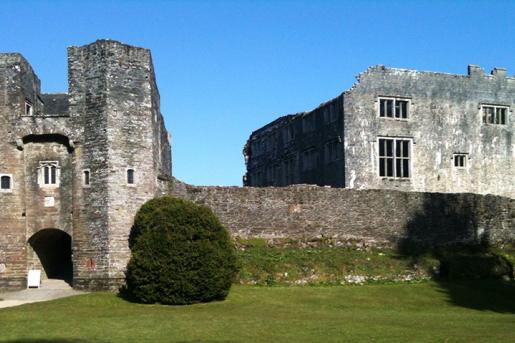- Deer Park
- C16
A royal licence to enclose the deer park at BerryPomeroyPark was granted in 1207; remains of substantial stone walls can still be seen around sections of the park. The sylvan approach to the castle ruins is one of the most dramatic in Devon and gives no hint of the spectacularly romantic setting, half way up a wooded hillside looking out northwards over a deep ravine and river. The de Pomeroys were here from the Norman Conquest to 1547, their fortifications date only from the later Middle Ages. In 1547 the castle was bought by Edward Seymour, Duke of Somerset and his family remained in occupation until 1688; the site is still part of the Duke of Somerset’s estate. The Castle was a favourite study for eighteenth century romantic painting. In the 1790’s W.G. Maton wrote ‘And when the surrounding scenery is taken into account, - the noble mass of wood fronting the gate, the bold ridges rising in the horizon, and the fertile valley opening to the east, - the ruins of Berry Pomeroy Castle must be considered almost unparalleled in their effect.’ In 1797 Polwhele noted ‘The ruins of this castle are an object of great curiosity to travellers. The north view seems the most romantic, from the old fragments of the castle breaking thro’ the deep umbrage of the fantastic woods.’
The castle is looked after by English Heritage.
Berry Poneroy should be added to the Historic England Register at Grade II in recognition of the medieval deer park.
Castle ruins listed Grade I, Deer Park wall listed Grade II*, Castle Mill and adjoining Millers House listed Grade I. Castle is a Scheduled Ancient Monument (SM21706).
.
Cherry & Pevsner: The Buildings of England – Devon, 1989: 165
S Pugsley: Devon Gardens – An Historical Survey, 1994: 21,23
T Gray: The Garden History of Devon, 1995: 41,42
T Gray: Devon Country Houses and Gardens Engraved Vol I, 2001: 9-14

